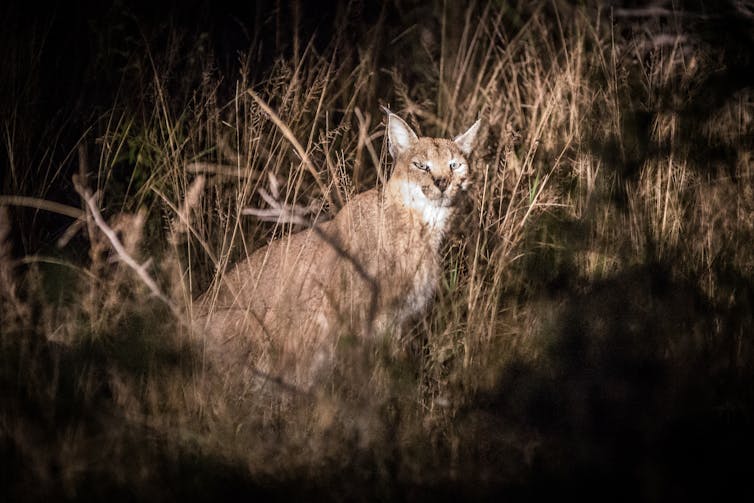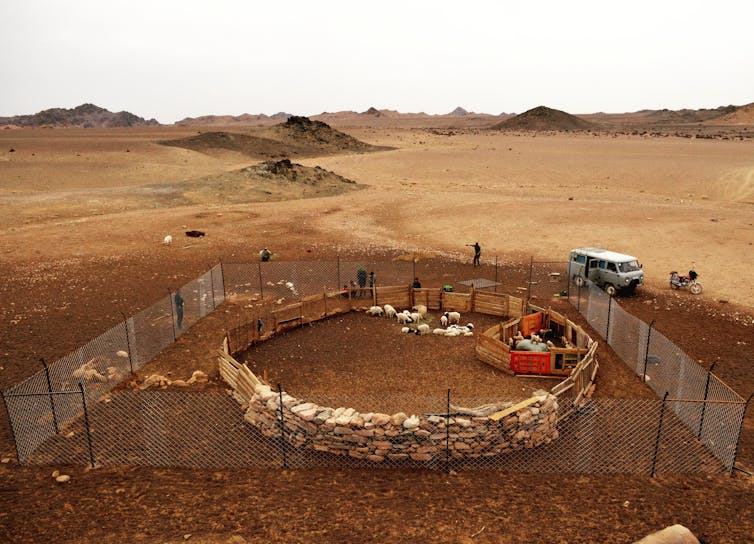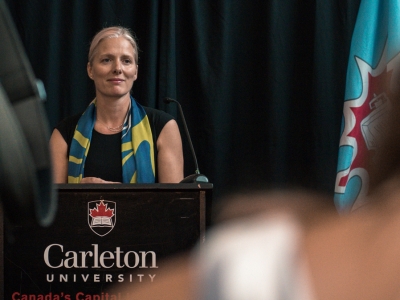By Robert Lennox, Austin Gallagher, Euan Ritchie, and Steven J. Cooke
In French Polynesia, fishing is an integral part of everyday life. The people living here fish on the flats and along the reef using nets, hooks and line, harpoons, spearguns and traditional artisanal traps.
They fish for food. They are also seeing the benefits of using their traditional knowledge to guide recreational fishing tourists — a business with potential to improve long term employment security.
Abundant sharks in the lagoon led to questions about their contribution to the fishery and whether it would help the fishery if they were targeted. This is a question that is often on the minds of humans when they encounter predators.
As an ecologist working with the fish populations in French Polynesia, I went looking for research about what happens to an ecosystem when a predator is removed. Are the responses predictable? Does it work? Can we make generalizations?
Our new study, published in Biological Conservation, surveyed the research on predator removal and identified several interesting — and perhaps unexpected — trends.
Humans and other predators
Predators are among the most charismatic animals on Earth — lions, eagles and sharks adorn many human symbols. On land, in the air and in water, predators fascinate and inspire, they are quintessential representations of nature’s majesty and might.
In spite of their ecological, economic and cultural significance, predators are among the most heavily persecuted animals, due to conflict with humans and their assets.
Predators attack and kill livestock, hunt economically important prey and can kill or injure people or be perceived as a threat to human safety. These conflicts may motivate humans to try to manage predators to lessen the damages.
One of the oldest and most rudimentary methods is to cull or remove them, even though predators are already rare and some are threatened with extinction.
The motivation to remove predators is easy to understand, but what if predator removal does not even achieve the desired outcomes?
In balance
Predators are essential to ecosystems because they regulate prey populations. Without predators, prey can become over-abundant. This can result in damage to local plants, as well as disease outbreaks that can spread to domesticated animals.
Top predators like wolves dominate small predators like coyotes, keeping those populations in check too. Without predators, ecosystems become unbalanced in many ways because plants, herbivores and small predators change in response to their loss.
In a perfect scenario, successful predator removal would strike a balance. It would reduce conflict and be sustainable, but not cause the predator population to disappear entirely. However, our review of 141 studies of predator removal revealed that success is rarely achieved.
Livestock attacks weren’t always reduced when predators were removed, and the human-wildlife conflict remained. On top of that, new predators often moved into vacated territory and recolonized areas where others had been removed. For example, when caracal (a type of wild cat) and leopard were culled in South Africa, predator conflicts on farms increased.

(gundy/flickr), CC BY-NC-SA
A small number of studies have shown successful removal of predators without harming the predator population, and led to increases in the prey population. However, these examples of success were generally from the Arctic where wolves were removed to increase caribou or moose numbers. In that scenario, there are fewer links in the food web, possibly making responses more predictable.
Generally, however, the responses were unpredictable and removing predators often failed for one reason or another.
Coexistence, not conflict
Ecosystems are complex networks of species. They include plants, decomposers, naturally subordinate predators (such as feral cats, foxes and coyotes), pathogens, predators and their prey. Together, they all play vital roles in regulating each other.
When humans remove predators, the effects are consistently negative. The action can, for example, fracture wolf packs into smaller units, or increase the reproductive rates of coyotes to produce even more offspring. This can have knock on effects, including an increase in disease, plant damage if herbivore populations explode and even an increase in the number of collisions between large herbivores, such as moose, and vehicles.
Instead of killing predators, there are other measures we can take to reduce conflict and learn to live with wildlife. In parts of Alberta, biologists are encouraging landowners to use electric fencing around bee hives and chicken coops to fend off bears. These types of non-lethal solutions can be tested and may often be more effective than removing the predator.
Other studies have suggested that “rewilding” an ecosystem — that is, reintroducing species into the ecosystem — can reduce conflicts. When their prey are abundant, the predators have less interest in nearby livestock. One study showed that lynx conflict with farmers increased when their natural prey, roe deer, were scarcer.
Essential elements
Instead of removing predators to manage human-wildlife conflict, we should be looking towards non-lethal alternatives. Using deterrent devices (lights, sounds or flapping material) can keep predators away from homes, fields and livestock.

The services that predators and functioning ecosystems provide to humans are of enormous value, and we would be wise to work hard to conserve and maintain them for the benefit of all.
Predators aren’t only symbols, they are essential parts of healthy terrestrial and aquatic landscapes. And beyond what we value, we should feel an imperative to preserve the diversity of life we share Earth with, most of which precedes our own evolution.
Of course, there will be times when predator removal may be necessary to protect people and their interests. Interventions that champion the principles of coexistence between humans and predators may be more successful and justifiable approaches to managing wildlife.
Efforts to protect predators or proactively promote their return, rather than continue contributing to their decline and extinction, are among the greatest conservation challenges we face.
This article is republished from The Conversation under a Creative Commons license. Carleton University is a member of this unique digital journalism platform that launched in June 2017 to boost visibility of Canada’s academic faculty and researchers. Interested in writing a piece? Please contact Steven Reid or sign up to become an author.
All photos provided by The Conversation from various sources.
![]()
Wednesday, June 6, 2018 in The Conversation
Share: Twitter, Facebook



